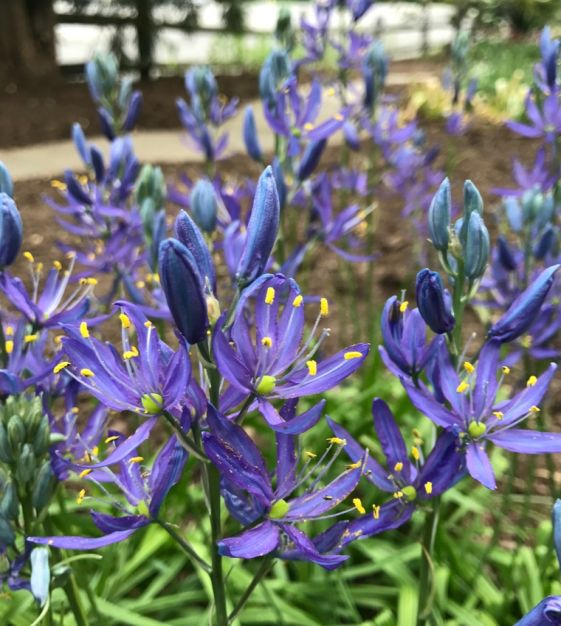-
- Discounted Collections
- 20%-Off Website Specials
- New for 2024!
- Tulips
- Narcissi
- Allium
- Anemone blanda
- Brodiaea
- Camassia
- Chionodoxa
- Corydalis
- Crocus
- Eranthis
- Eremurus
- Erythronium
- Fritillaria
- Galanthus
- Geranium
- Gladiolus
- Hyacinths
- Hyacinthoides
- Ipheion uniflorum
- Dutch Iris
- Rock Garden Iris
- Ixiolirion
- Leucojum aestivum
- Muscari
- Ornithogalum
- Oxalis
- Puschkinia
- Scilla
- Lilies
- Peonies
- Amaryllis
- Paperwhites
- Tender Bulbs
- Anemone Giants
- Tecolote Ranunculus
- Freesias
Camassia quamash
A Pacific Northwest U.S. native circa 1837, the Indian Hyacinth is best grown in moist, fertile soil in full sun to partial sunlight. Commercially grown in the Netherlands for decades, unlike most bulbs, it prefers soil that has a bit more moisture. Deer- and rodent-resistant, C. quamash forms ever substantive clusters of linear strappy foliage around upright racemes studded with dozens of six-petaled, 2", star-shaped lavender-blue flowers with yellow anthers and whisper-green centers. The flowers open sequentially from the bottom to the top. Bulb size: 6 cm/up. Full to partial sunlight. Bloom time in horticultural zone 5: May/June. HZ: 4-8. Height: 15".
Camassias are The Art & Soul of Spring.
Camassia Horticultural Tips
Camassias are The Art & Soul of Spring.
Camassia Horticultural Tips





